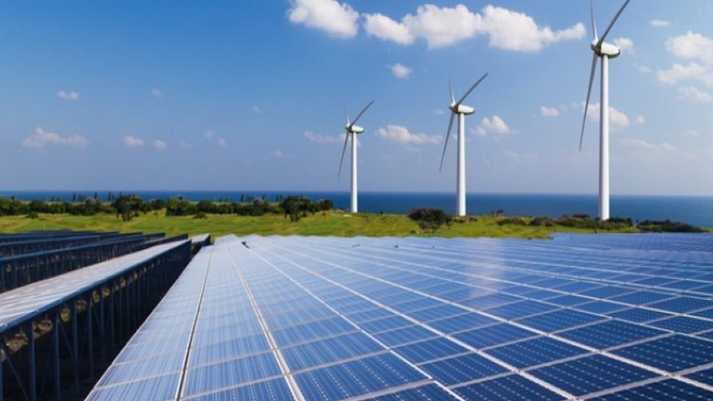Renewable Energy Storage Problem Could be Solved by New Type of Fuel Cell

Image Courtesy: Economic Times. Image for representational use only.
There is a crucial need for making renewable energy a reality in the current times. In order to do this, technology that can convert electricity from wind and sun into chemical forms for storage and vice versa is required. The existing commercial devices that do the job are mostly very costly and are not fully efficient in doing both the jobs. But researchers have now developed lab scale devices that could perform both the jobs. If the lab scale devices can be made on a larger scale, it can contribute greatly in making renewable energy more affordable and also help in realising the dream of running the world on renewables.
The market for such technologies has also surged over the past decade or so. For example, in US, 0.8 per cent of the power need was provided by solar and wind power, while in 2017 it rose to 8 per cent—a 10-fold increase. But often it happens that the supply of renewables could not meet the demand of electricity. What often happens is that the solar panels produce more energy than needed in the middle of the day, but none at night. The important part is the storage of the excess energy generated so that it can be used at night, thus bringing renewables to the mainstream power supply.
As a way out, many utilities are installing massive banks of batteries. However, not only are these batteries expensive, but they also store the energy to back up the grid only for few hours. Another option comes in the way of converting the energy into hydrogen fuel. There are devices—electrolysers that do this task by using electricity from wind and solar power. They split water into oxygen and hydrogen gas, which is a carbon free fuel. A second type of device called the ‘fuel cells’ can convert the hydrogen back into electricity that could power cars, trucks, buses or feed the power grids.
But this method is not free of problems. Commercial electrolysers and fuel cells use different catalysts to speed up the two reactions, which mean that a single device cannot perform both the tasks. To address this problem, researchers have been trying a new type of fuel cell—the proton conducting fuel cell (PCFC). The PCFC can make fuel and reconvert it to electricity using just one set of catalyst.
Proton Conducting Fuel Cell
The PCFCs consist of two electrodes separated by a membrane that allows the proton across. The first electrode known as the air electrode, has steam and electricity that are fed into a ceramic catalyst which splits the steam’s water into positively charged hydrogen ions, oxygen molecules and electrons. The electrons generated travel through an external wire to the second electrode—the fuel electrode. It is the fuel electrode where the electrons meet up the protons that cross through the membrane. Here, a nickel-based catalyst combines them to make hydrogen gas. In previous PCFCs, the nickel catalyst was found to perform fine, but the ceramic catalyst was inefficient. Much of the electric energy was lost as heat in it.
Improvised PCFCs
Two new researches have worked out the way for a better performance by the ceramic catalyst. One study led by Sossina Haile of Kumoh National Institute of Technology, Korea, developed a fuel electrode made from a ceramic alloy containing six elements that was able to harness 76 per cent of the electricity, maximum part of which was wasted as heat in previous fuel cells. The other one, published in Nature Energy developed a ceramic alloy electrode that could harness 98 per cent of the electric energy.
Both the team exercised their set up in lab. The fuel electrode splits the hydrogen molecule into protons and electrons. The electrons travel through an external wire to the air electrode and provide electricity to power devices.
The new developments show a way to increase energy efficiency in fuel cells. In its nascent stage, these new techniques, if brought to a large-scale power grid would surely be beneficial for the use of renewables in meeting the power demand.
Get the latest reports & analysis with people's perspective on Protests, movements & deep analytical videos, discussions of the current affairs in your Telegram app. Subscribe to NewsClick's Telegram channel & get Real-Time updates on stories, as they get published on our website.














